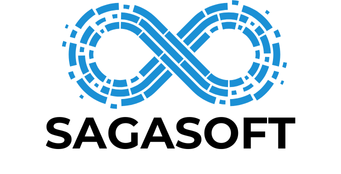Businesses face increasing pressure to scale rapidly while managing costs and complexity. AI workers unlock new possibilities by automating repetitive tasks, enhancing decision-making, and operating continuously without fatigue. This transformation redefines traditional workforce roles and accelerates growth, offering tailored solutions that adapt to evolving market demands. Exploring AI’s unique capabilities provides a fresh perspective on how digital transformation enables smarter, faster, and more scalable business expansion.
How AI Workers Transform Business Expansion
Unlocking new growth avenues through AI-driven strategies
In parallel : Alibaba's qwen takes on chatgpt in ai showdown
The impact of AI workers on business expansion is profound, fundamentally changing traditional scaling methods. Unlike conventional approaches that rely heavily on human labor and incremental resource increases, AI workers bring unique capabilities that allow companies to scale more efficiently and intelligently. They handle vast data processing, automate routine tasks, and enable rapid decision-making — all crucial for accelerating growth.
By integrating AI-driven business expansion strategies, companies can redefine workforce roles. Employees shift from repetitive functions to more strategic, creative, and supervisory positions, while AI handles operational tasks. This digital transformation reshapes organizational structures, promoting agility and faster adaptation to market changes.
Additional reading : Unlocking the Future: Harnessing AI for Superior Predictive Maintenance in Aerospace Engineering
One critical advantage of AI workers lies in their ability to overcome common scaling challenges. Businesses often struggle with maintaining quality, managing increasing complexity, and controlling costs during growth phases. AI systems help address these issues by offering consistent performance, predictive insights, and scalable automation, which reduce errors and optimize resource allocation.
Moreover, these AI workers are continuously learning and evolving, providing ongoing enhancements to business processes. This adaptability supports sustainable expansion, as companies can anticipate trends, personalize customer experiences, and optimize supply chains dynamically.
For those interested in deeper insights into how to harness AI talents for transformative growth, exploring resources on ai employees can provide valuable perspectives on integrating these technologies effectively.
Core Capabilities and Benefits of Advanced AI Workers
Advanced AI automation offers transformative potential for businesses by streamlining both repetitive and complex tasks. This type of business process automation allows companies to scale operations without proportionally increasing human workload. For example, AI workers can handle data entry, customer inquiries, and inventory management simultaneously, freeing up human employees to focus on strategic activities.
One of the primary AI benefits for business lies in enhancing operational efficiency. Unlike traditional workflows, advanced AI automation operates 24/7 without fatigue, slashing delays and increasing overall productivity. This continuous capability ensures critical processes like order processing and support ticket resolution happen faster and more consistently.
Furthermore, AI workers contribute significantly to improved decision-making through data-driven insights. They analyze vast datasets in real-time, identifying trends and anomalies that may elude human analysts. This allows business leaders to make informed decisions promptly, minimizing risks and capitalizing on emerging opportunities.
Incorporating such AI capabilities not only boosts efficiency but also provides a competitive edge, making sophisticated business process automation an essential strategy for growth. For organizations aiming to leverage this technological advancement fully, exploring ai employees could bring tailored solutions that fit their specific needs and scale effectively.
Practical Steps for Implementing AI Workers in Business Expansion
Implementing an AI workforce requires a well-planned AI implementation strategy to ensure smooth integration and optimal outcomes. First, businesses must identify processes that are most suitable for AI automation. These typically include repetitive, data-intensive tasks such as customer service inquiries, data analysis, and routine administrative duties. Selecting the right processes ensures that AI workers can add maximum value without disrupting core operations.
Next, building a robust infrastructure is crucial for managing the technology transition. This involves upgrading digital systems to support AI workloads, ensuring data security, and adopting scalable cloud solutions. A clear digital adoption roadmap that outlines the phases of technology deployment and risk management helps organizations navigate complexities and maintain continuity.
Finally, training teams to work effectively alongside AI is essential. Employees need to understand how AI employees function, their capabilities, and limitations. Effective training fosters collaboration between human workers and AI systems, improving productivity and reducing resistance to change. Emphasizing transparency about AI roles alleviates concerns and promotes acceptance.
By focusing on these areas—process identification, infrastructure development, and team training—businesses create a sustainable environment for AI integration. For deeper insights on boosting growth with smart technology, exploring resources on ai employees can offer practical guidance tailored to your business needs.
Real-World Applications and Case Studies
Exploring how AI for business growth translates into reality reveals diverse sectors embracing AI workforce in practice with remarkable results. One standout application involves scaling customer support and service operations. Companies deploy AI-powered chatbots and virtual assistants to handle high volumes of inquiries efficiently. These intelligent systems often process thousands of interactions daily, providing instant responses and freeing human agents for complex issues. This not only enhances customer satisfaction but also reduces operational costs significantly.
In optimising supply chain management and logistics, AI excels by improving demand forecasting and inventory control. Machine learning algorithms analyze vast datasets to predict trends, identify bottlenecks, and optimize routes in real-time. As a result, businesses achieve better delivery times and lower expenses while minimizing waste. Real-world case studies demonstrate how AI solutions bolster responsiveness amid fluctuating market demands.
Lastly, AI’s role in enhancing sales, marketing, and personalisation efforts helps businesses target customers more precisely. AI workforce in practice enables hyper-personalized communication based on customer behavior and preferences, improving engagement rates and conversions. Success stories highlight AI-driven campaigns that adapt dynamically to user interactions, increasing ROI. Integrating AI into these domains provides a clear competitive advantage, showcasing why AI for business growth is not just theoretical but transformative.
For those interested in exploring how cutting-edge AI solutions can further transform your company, consider learning more about ai employees.
Comparing Conventional Methods with AI-Driven Expansion
Traditional vs AI business expansion highlights a transformative shift in how companies scale. Conventional methods rely heavily on human workforces, which often involve longer timelines and variability in efficiency. AI-driven expansion, however, delivers marked improvements in efficiency and speed gains, automating repetitive processes and enabling real-time data analysis. This means businesses can respond faster to market changes and customer needs, accelerating overall growth significantly compared to strictly human-driven efforts.
When considering cost reduction and return on investment differences, AI solutions frequently showcase superior performance. While initial technology investments may be substantial, AI reduces ongoing labor costs and minimizes errors, improving ROI over time. Unlike traditional scaling strategies that incur incremental hiring and training expenses, AI allows for scalable operations without proportional increases in personnel costs. This leaves businesses better positioned to optimize budgets and allocate funds toward innovation and market expansion.
In terms of talent allocation and competitive positioning, integrating AI reshapes workforce dynamics. Employees can shift focus from routine tasks to strategic initiatives, increasing job satisfaction and productivity. This evolution of the workforce creates a competitive edge by blending human creativity with AI’s analytical power, fostering innovation. Companies embracing this synergy position themselves ahead of competitors reliant solely on conventional methods.
For those interested in further enhancing their workforce capabilities, exploring ai employees can provide practical insights into blending human and artificial intelligence to boost business growth effectively.
Long-term Impact and Future Outlook of AI Workers in Business Growth
Exploring the trajectory of AI workforce trends for sustained success
The future of business expansion is increasingly intertwined with the integration of AI workers, who are not just supplements but pivotal contributors to growth strategies. Emerging trends reveal that AI workforce trends are moving beyond automation toward intelligent collaboration, enabling companies to scale operations efficiently while innovating continuously.
Ensuring scalability and a long-term competitive advantage requires adopting sustainable AI strategies that evolve alongside market demands. Businesses leveraging AI employees benefit from dynamic adaptability—these systems learn and optimize performance over time, fostering resilience against disruptions.
Ongoing innovation in AI capabilities promotes resilience by allowing organizations to pivot and refine processes swiftly. This adaptability is crucial in sustaining growth as AI workers handle complex data analysis, enhance decision-making, and free human employees to focus on strategic, creative tasks. For companies to truly harness this, they must align AI implementation with their future business goals, cultivating a workforce where AI and humans complement each other seamlessly. To deepen understanding and explore how cutting-edge AI employees can propel your business forward, discover more insights about ai employees.











